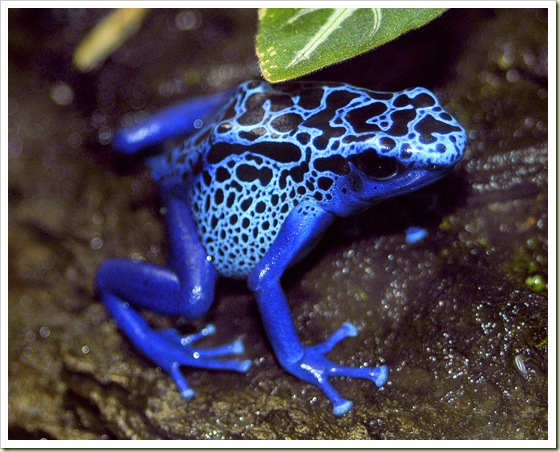
A brightly colored frog that lives in the Central or South America, is something you don't want to get near. Yes they are bright colored for a reason, it serves a warning to other predators .Their are many types of dart frogs here is an example of one. The little 2 inch long creature is one of the most poisonous animals on earth. This tiny thing has enough venom to kill 10 adults or 20,000 mice. Only 2 micrograms of this lethal toxin is able to kill human or any large mammal. They call it a dart frog because it sickens anyone who touches or eats it. Their skin releases a toxic that can easy kill. This frog was not discovered till 1968, Jack Cover and a Aquarium team traveled to South America to learn more about this frog, and they decided to breed them. His goal it to keep these from being extinct.





